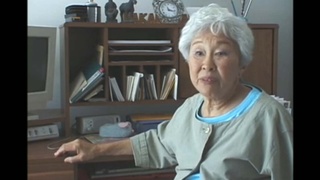Interviews
Appearance vs. Combat Effectiveness
In the military there’s a very, very strong belief that if you polish your shoes and press your pants and salute right and you’re clean, then you’re a good combat soldier. And so for the military, appearance in a sense is related to combat effectiveness. And nothing could be further from the truth. See? The 100th is the last…is the worst looking outfit, if you’re going to look at it from appearance, they’re the wrong height, they’re the wrong everything.
Now if you take the boys the islands, it’s even worse, cause over half the men in my platoon never wore shoes before, cause they were from a plantation. So they wouldn’t tie their shoelaces. See? Cause the feet hurt, I mean they really hurt, see. The other thing is that, since they didn’t tie their shoelaces, they didn’t blouse their pants inside their shoes or put leggings on. The other things too, it’s hot and humid in Shelby and so they wore their shirttails out like Hawaiian style, like I’m wearing now, see? And the other things is that they wouldn’t get a haircut, see?
So now I’ve got a crew that I’m trying to make get haircuts, put their shirttail in and tie their shoelaces and that’s almost an impossible task you know, it’s 44 against 1, you know and now trying to train a whole company I got a 180 of them, 190 of them you know, rebelling. And, sure I could get a few NCOs to do it and what not but I never succeeded in ever getting them properly “groomed” shall we say military style. But when I got in combat, I learned that those values are meaningless. That, that has no relationship to whether a man is combat effective.
Date: August 28, 1995
Location: California, US
Contributed by: Watase Media Arts Center, Japanese American National Museum









